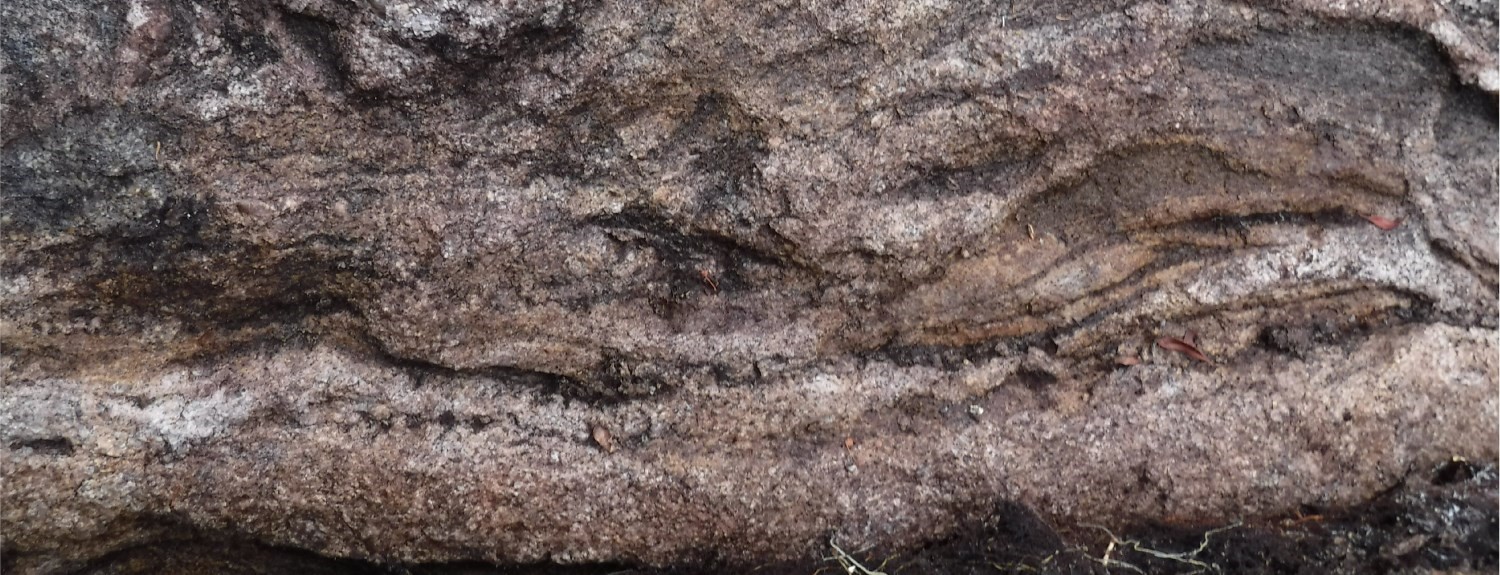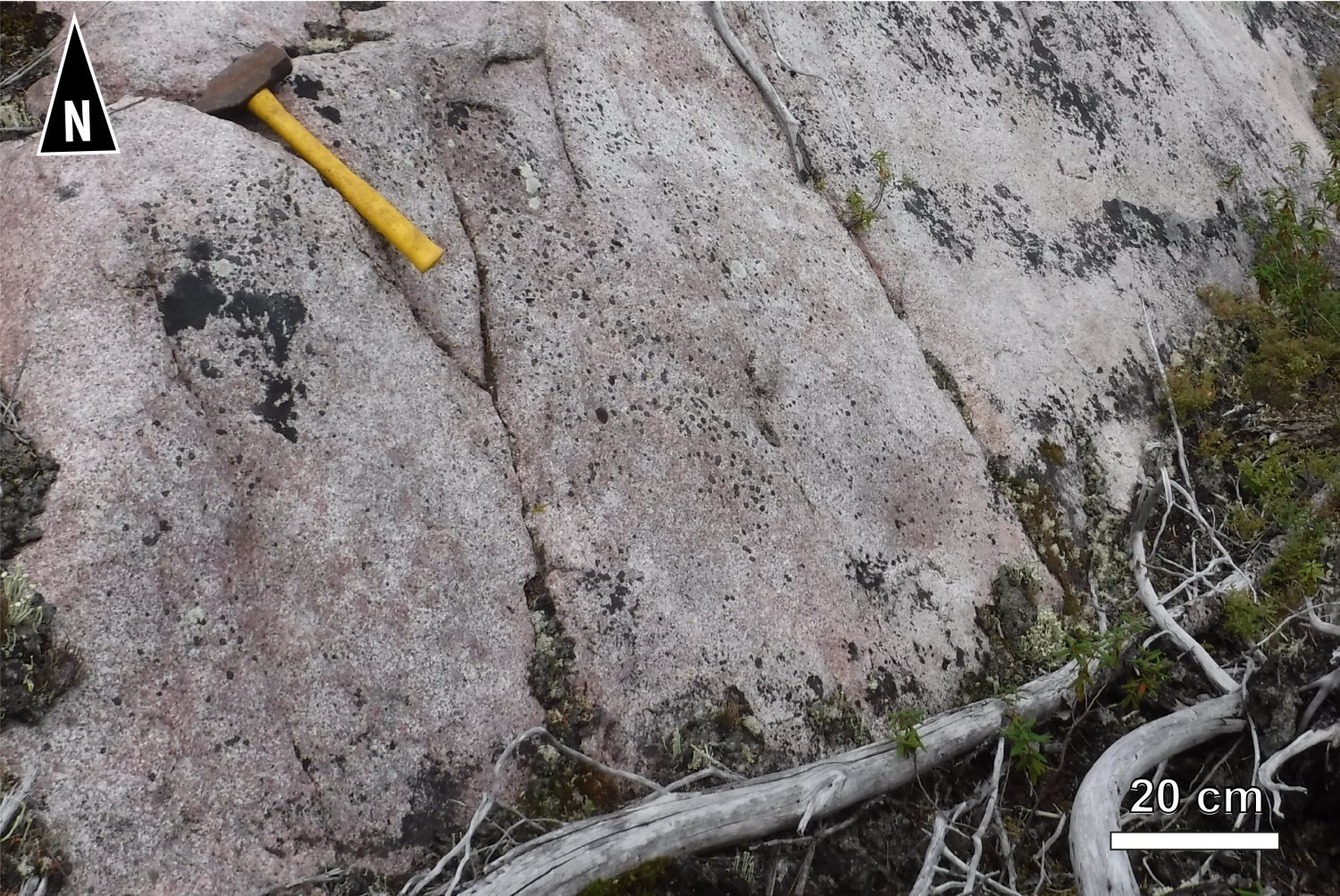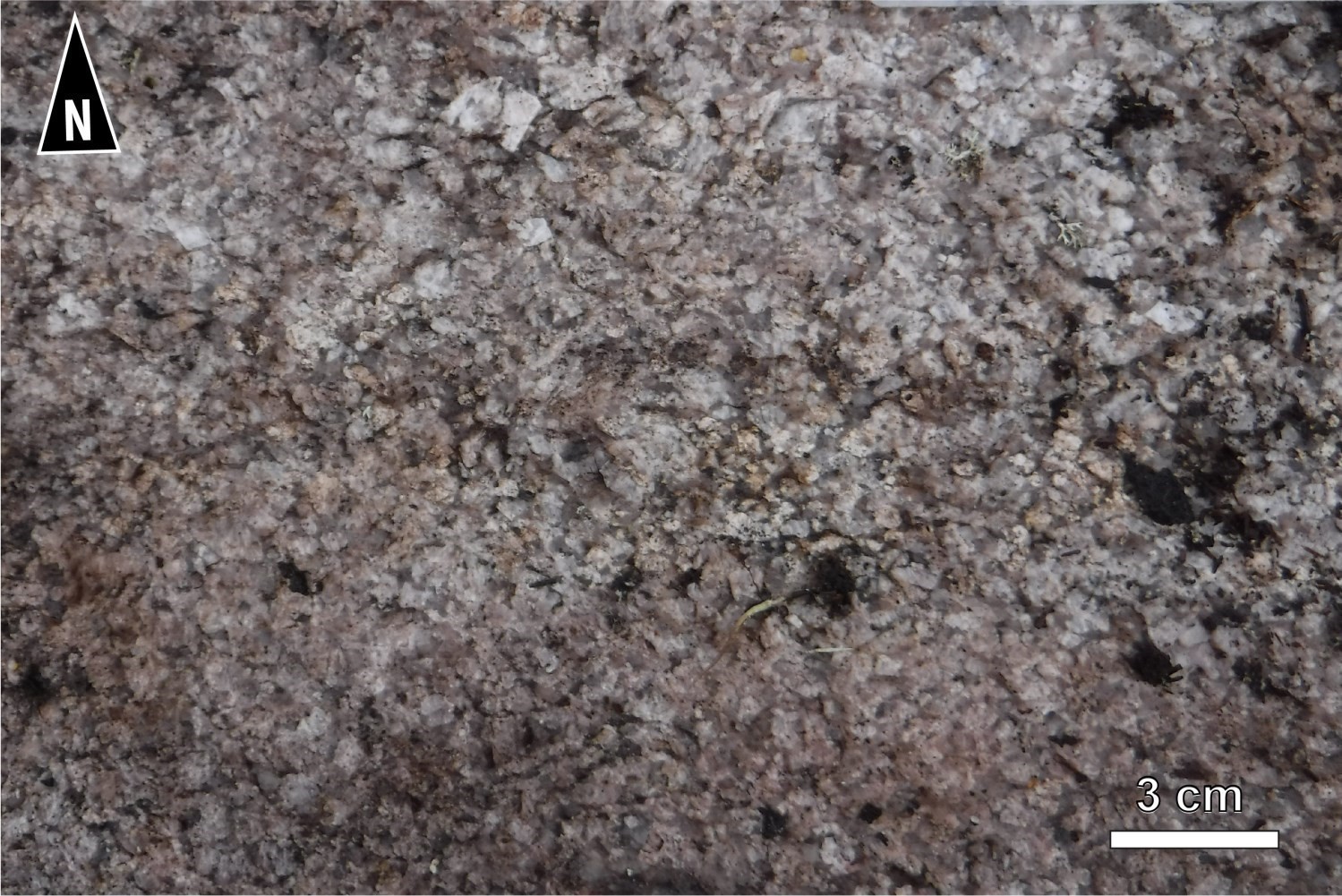
| Author: | Talla-Takam et al., in preparation |
| Age: | Neoarchean |
| Reference section: | None |
| Type area: | Emmanuel Lake area (sheet 33A) |
| Geological province: | Superior Province |
| Geological subdivision: | Opinaca Subprovince |
| Lithology: | Granite, granodiorite and tonalite |
| Type: | Lithodemic |
| Rank: | Lithodeme |
| Status: | Formal |
| Use: | Active |
None
Background
Following two summers of mapping in the Cadieux and Campan lake areas, Hocq (1985) grouped two isolated plutons of granite and leucogranite within the “Rivière des Antons Massif”. These two plutons, a few kilometres apart, are hosted in gneiss (Hocq, 1985). In 2016, Talla Takam et al. (in preparation) add these two intrusions into a larger unit called Des Antons Granite (nAant). This larger unit contains metric to kilometric enclaves of Laguiche Complex metasedimentary rocks. Other isolated intrusions a few hundred metres wide with the same geochemical signature also belong to this unit. However, some of these intrusions have tonalitic composition and have been assigned to unit nAant2.
Description
Rocks that form the Des Antons Granite (nAant) are mainly granitic, but locally show a granodioritic, quartz monzonitic or quartz syenitic composition. These compositional variations are caused by the polyphase character of this unit. This feature is clearly visible on the magnetic gradient map of the region, which allows for identifying changes in the magnetite content of the various intrusive phases. However, the different phases are difficult to detect at the outcrop scale. This type of assemblage is interpreted as an intrusion complex (Morfin, 2014).
On the geological map, the Des Antons Granite can take several forms: 1) a large continuous volume concentrated in sheet 33A15; 2) smaller kilometric intrusions that can be considered as small plutons, and 3) dykes. In all cases, granite intrudes roughly by following the main foliation. Outcrops may contain up to 45% paragneiss and metatexite enclaves of the Laguiche Complex.
Des Antons Granite 1 (nAant1): Granite, Granodiorite and Quartz Monzonite
In general, rocks are leucocratic, beige to pinkish white, massive and medium to coarse grained. Pegmatitic textures are common. Biotite schlierens are locally observed, as well as stretched paragneiss lenses. In addition to quartz, plagioclase and K-feldspar, granite contains 2 to 8% biotite, as well as zircon and apatite as accessory phases. Locally, the rock also contains garnet and shows a myrmekitic texture. Orthopyroxene is very scarce, whereas it is ubiquitous in metasedimentary outcrops (Laguiche Complex). As with other units in the area, the main alterations are the chloritization of biotite and the damouritization of plagioclase.
Des Antons Granite 2 (nAant2): Tonalite
Some felsic dykes from the northwestern portion of sheet 23D13 have a more tonalitic composition. These tonalites are massive to slightly foliated, leucocratic and medium to coarse grained. The main constituents of the rock are quartz, plagioclase, partially chloritized biotite (~10%) and magnetite.
Thickness and Distribution
The main intrusion of the Des Antons Granite occupies the northern half of sheet 33A15 and part of sheets 33A16 and 33A14. It stretches E-W over 70 km long and 15 km wide. Other smaller intrusive bodies (~10 km) are scattered in sheets 23D13 and 23D11. Finally, isolated intrusions (not all mappable) are recognized wherever the Laguiche Complex is present.
Dating
None.
Stratigraphic Relationship(s)
The various phases of the Des Antons Granite have intruded subconformably in metasedimentary rocks of the Laguiche Complex.
Paleontology
Does not apply.
References
| Author(s) | Title | Year of Publication | Hyperlink (EXAMINE or Other) |
|---|---|---|---|
| HOCQ, M. | Géologie de la région des lacs Campan et Cadieux, territoire-du-Nouveau-Québec. Ministère de l’Énergie et des Ressources, Québec; ET 83-05, 188 pages, 4 plans. | 1985 | ET 83-05 |
| TALLA TAKAM, F. – BEAUCHAMP, A-M. – MASSEI, F. | Géologie de la région des lacs Emmanuel et Léran. Ministère de l’Énergie et des Ressources naturelles, Québec. | In preparation | – |
| MORFIN, S. | Influence de la mise en place pervasive de magma d’anatexie sous forme de complexe d’injection dans la croûte continentale. Université du Québec à Chicoutimi; doctoral thesis, 267 pages. | 2014 | Source |




